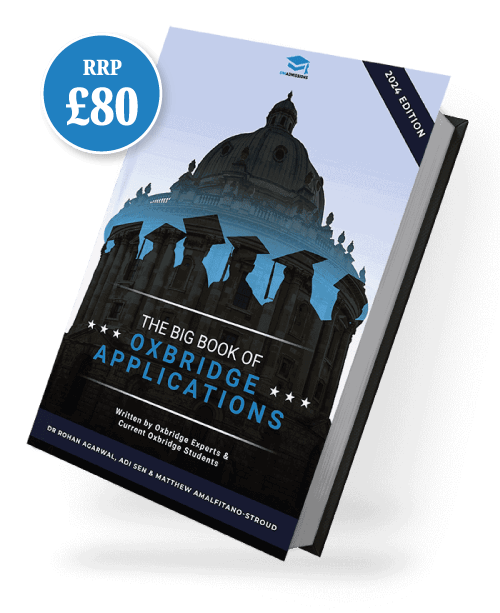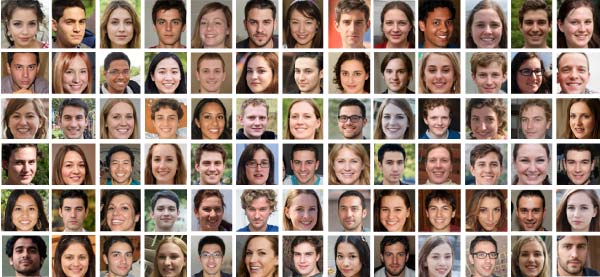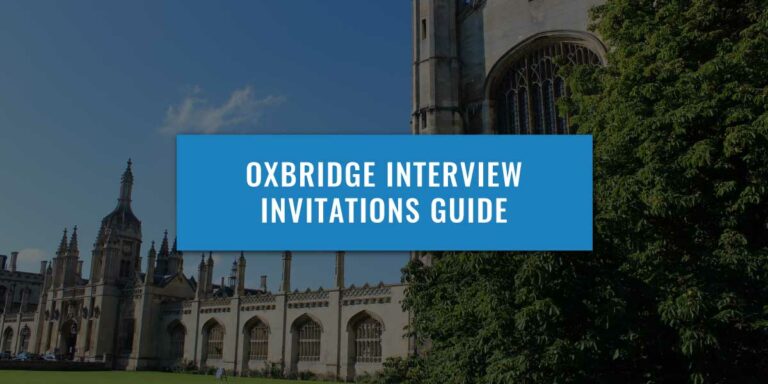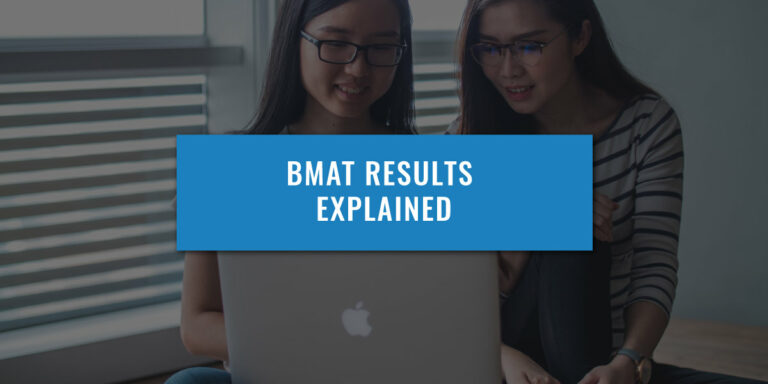Tutorials make up a large part of Oxford’s core teaching. This intimate teaching style is very different to the educational approaches you will be used to in school. So what are tutorials actually like?
The tutorial teaching style is unique to Oxford and Cambridge (aka supervisions). It allows for a more personal and intimate teaching style based around conversations.
Pierre, an undergraduate Oxford Medic, discusses what tutorials are like, how best to make use of them and he shares his own experiences of tutorials throughout his six years of studying at Oxford. This article is the second part of our series on Oxbridge teaching, the first part, on Cambridge Supervisions, can be found here.

Are you hoping to secure your dream offer from Oxford?
Our expert Oxbridge tutors provide the support you need to gain your dream place. How? We help you craft the perfect Personal Statement, achieve a highly competitive Admissions Test score and teach you how to Interview effectively – covering all areas of your Oxbridge application.
Discover our Oxbridge Premium Programmes by clicking the button below to enrol and triple your chances of success.
What are tutorials?
Tutorials are a type of teaching session where a tutor meets with a small group of students to discuss a particular topic. They are normally one hour in length and the number of students is typically less than four, however, this will vary between colleges and subjects.
In my undergraduate Medical degree, tutorials were usually run as a pair with one of our tutors affiliated with our college. Also, there were occasional larger tutorials with all six of the medics in my year at my college. Here are some points about tutorials:
- The style of a tutorial is designed to replicate a conversation.
- The tutor initially poses a question which may then be answered and discussed by all parties.
- Students then respond with their own thoughts or opinions.
- The Oxford Interviews are a close approximation of this, although tutorials are a lot more relaxed and enjoyable.
During the pre-clinical years of my course, most tutorials followed this style, however, tutorials in the clinical years of my course differ greatly:
Most of our tutorials consist of bedside teaching at one of the hospitals in or around Oxford, usually the John Radcliffe Hospital.
In these sessions, the tutor will either have picked patients for us to see or ask us to suggest patients we have seen throughout the week.
We will then visit the patient as a group to take a history and perform an examination. Normally, one student will take the history while another will perform the examination.
The students will then present the patient to the tutor mentioning key aspects of the patient history and then move on to discuss a differential diagnosis, investigations, and a management plan.
This tutorial-style is more beneficial in the clinical years as it reflects OSCE examinations and trains us for our future work as doctors.
How often are they?
Tutorials take place on a weekly basis with each tutor; although you may have multiple tutors for different subject areas meaning you will have 2 or 3 tutorials in an average week. They are usually held in the tutor’s office which will either be in college itself, or in a faculty building. Both of which are easily commutable from accommodation by walking or cycling.
Example of an Oxford Tutorial
As with most meetings, tutorials will often begin with a few minutes of pleasantries which allows you to have a quick catch-up with your tutor about your respective lives and for them to check how you got on with the work.
It’s easy to imagine Oxford tutors as big scary academics but most are very friendly and you will get to know them fairly well over the course of your degree. I was somewhat intimidated by my main tutor when I joined until I got to know him and learned he was a singer in a rock band!
Following this, the tutor will ask a question starting with some of the basics of the topic to be covered. For example, if we had a tutorial about DNA replication, the tutor would begin with some wider questions about the topic such as the structure of DNA, or the purpose of the process. They may then guide the conversation through more of the topic, for example, moving on to ask questions about the initiation of DNA replication and the process itself.
The conversation would continue in this manner for the majority of the hour-long tutorial, with some harder questions thrown in now and again. These may be questions designed to make us question how we know something is true i.e. what evidence is there to support this theory or simply to challenge our scientific thinking.
Tutors will normally try to ensure all the students present are questioned an equal amount, however, if a harder question falls to you, it’s perfectly ok to not know. This is also where you benefit from having other students present as someone else will always be there to offer a suggestion when you can’t.
The final 10 minutes of the tutorial will be spent concluding the topic and briefly discussing your work. Our marked essays would usually be given out at this point, and the tutor would go through any key points they thought needed clarifying or would just give us each a short snippet of feedback on our work.
In the last minute of the tutorial, you may decide to set a time and date for your next meeting or this may be organised later over email.

Access "The Big Book Of Oxbridge Applications" For FREE
Want to learn more about Oxford and its application process? Claim your free digital copy of The Big Book Of Oxbridge Applications, now and access over 350 pages of helpful content, including:
- Over 40 admissions test practice questions
- 28 example Oxbridge Personal Statements
- Interviews with Oxbridge students and graduates
- Additional downloadable resources
Fill in your details below to claim your digital copy today!

How to prepare
Essay Writing
Some form of work will usually be set to help you prepare for the tutorial in advance of the tutorials. For most essay-based subjects, the tutor will pick an essay title for you to write and submit 24 hours before your tutorial to allow time for marking.
The essay topic chosen is often directly relevant to your syllabus so you may have some existing knowledge from lectures. It may also be on something likely to come up in future examinations, so they serve as a great revision tool. In my experience, essays generally had to be over 1500 words, with some tutors asking for 3000 words.
This was quite demanding at times as we often had 2-3 essays to write at any one time. Some people may struggle with this workload initially, but you will begin to adapt to the fast turn-over and learn to work more efficiently. Tutors are also generally quite accommodating with extensions, so it is always worth asking for more time rather than handing in something unfinished or of low quality.
In contrast, other subjects may be set other forms of work. For example, in subjects such as physics and maths, problem sheets may be set, and for subjects like English or Languages, there may be a reading list to get through.
Reading for Tutorials
When completing the work set, the majority of your time will be spent reading around the topic. The tutor would normally give us a suggested reading list including textbooks and key papers that we may want to discuss. Within a few months of studying, we quickly realised which textbooks were the best for specific subject areas and found the most helpful websites to use.
General Preparation
On the day of the tutorial, I would try to spend at least an hour preparing in order to help get the most out of the session. I did this by reading over my essay to ensure I had a good understanding of the topic and the information was fresh in my head. I would also look back at my notes and any key papers I came across to refresh myself on additional information I may want to discuss in the tutorial.
It’s also important to pack your bag in advance so you bring the correct items to facilitate your learning. For some people, this was a laptop so they could simultaneously take notes and check back to their essays. For others, this was a notebook and pen so they could draw diagrams as well as take notes.
I preferred to use a laptop as I could add my notes to the bottom of my essay and look over anything I had forgotten. It also meant I could secretly Google things if I had no idea what to say!
Oxford Tutorials Final Top Tips
1. Make use of feedback on your work
Tutorials give you an opportunity to get personalised feedback on your work by an expert in that field or a closely related one. This is particularly important in essay subjects where a similar essay may come up in your end of year examinations. This means regardless of how score on your first attempt, you can use the feedback to improve your essay to hopefully achieve those top marks.
Correcting and improving your essays during term time may be a difficult task as you will have a stream of new work being set. However, the short terms and long holidays at Oxford allows you to use the holidays to get ahead by perfecting your essays.
2. Ensure you feel prepared for the tutorial going into it
If you arrive well-versed in the topic, it will allow more time for further discussion and the chance for the tutor to challenge you with questions that require harder thinking. Furthermore, if you had any questions or areas you didn’t fully understand, tutorials are a great opportunity to get clarification.
3. Work as a team with your tutorial partner
It is important to remember you are not alone going into a tutorial as there will be at least one other student preparing the same essay/piece of work as you. I suggest you make use of each other by discussing the topic and ideas for your respective essays.
Furthermore, meeting to discuss the topic after writing the essay or after the tutorial is a great way to affirm your knowledge and check your understanding. It is likely you will have both scored well in different areas of your essays, so sharing your work after it has been marked is a great way of seeing what you have missed from your piece and ways you can improve.
You are much more likely to do well at Oxford by working smart and cooperating with others, than working harder than you need by yourself.
Bridge the gap between school and Oxford through our tutorial style teaching and one-to-one tuition.
We help you craft the perfect Personal Statement, achieve a highly competitive Admissions Test score and teach you how to Interview effectively – covering all areas of your Oxford application, from History to Medicine.
Discover our Oxbridge Premium Programmes by clicking the button below to enrol and triple your chances of success.








